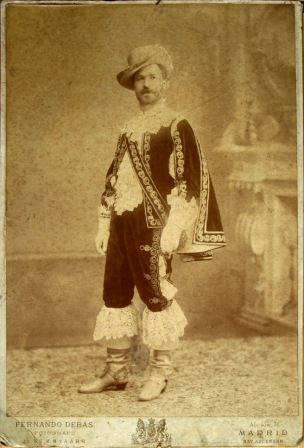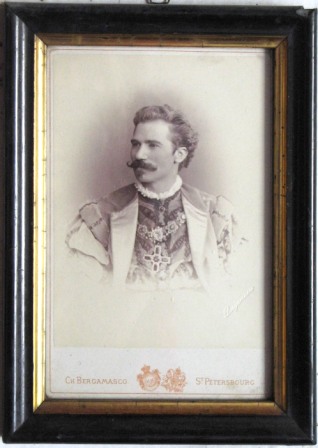26 September
Conferences
ON THE 125TH ANNIVERSARY OF THE DEATH OF JULIÁN GAYARRE
Opera in the time of Julián Gayarre
D. Xabier Armendáriz Arraiza
graduate in Piano and Musicology. Music critic
The operatic panorama of the 19th century is generally well known to aficionados, at least as far as the major figures are concerned. The major operas of Verdi and Wagner, the two great revolutionaries of the genre during that period, are still as topical today as when they were conceived, and are still successfully performed all over the world. However, our approach to the operatic world is no longer the same as it was for the contemporaries of these composers and Julián Gayarre. We now have readily available sound recordings of almost any degree scroll we want; our tastes in subject board member have been influenced by the recordings we listen to, and we tend to value vocal fireworks and big trebles more highly, to the detriment of a well-crafted singing line.

Portrait of Gayarre taken by the photographer Fernando Debas in Madrid.
In the lecture we focus our attention on the operatic panorama of the three great centres of activity during the 19th century: France, Germany and Italy. Without losing perspective and forgetting the great composers of the three countries, we take a brief look at some of the most neglected aspects of the functioning of the 19th century operatic circuit. We recovered composers who in their day were successful and today are almost never performed (Meyerbeer, Flotow); we witnessed some of the practices, fortunately forgotten today, that were carried out in the 19th century, such as translating operas into a language convenient for singers and/or audiences.
We did this through a carefully chosen set of recordings, not forgetting some of the major 19th century opera divas of whom we have surviving recordings (Adelina Pati or Leo Slezak), nor singers who, like Aureliano Pertile or Helge Roswaenge, developed these vocal characteristics and brought them into the interpretative tradition of the great singers of the 20th century. At final, it was a journey back in time to an era when opera was an entertainment available to the few, but which nevertheless aroused passions among city dwellers, particularly in Italy and France.

Portrait of Julián Gayarre taken in St. Petersburg by the photographer Charles Bergamasco.
